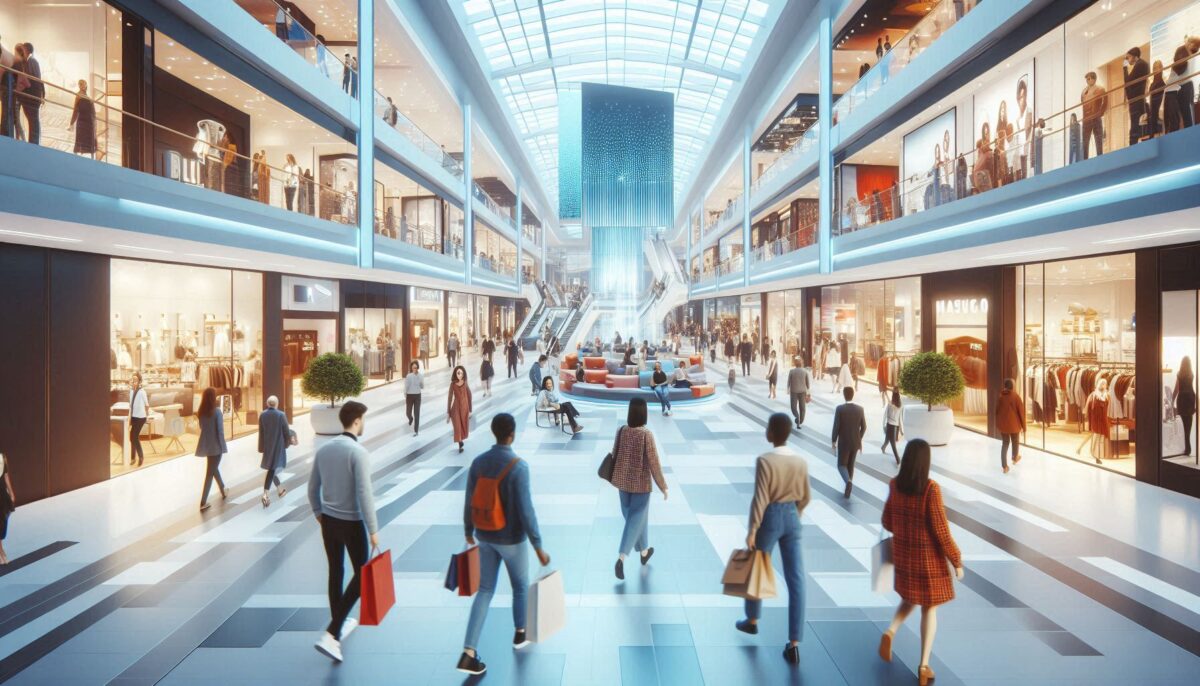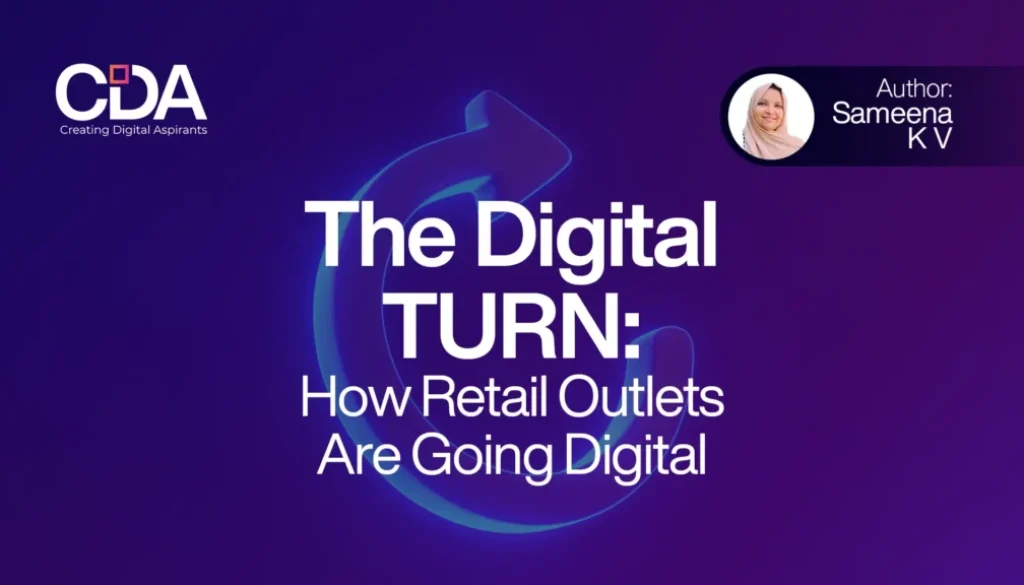The Digital Turn: How Retail Outlets Are Going Digital
We all know that our ancestors exchanged goods and services in a barter system.It was the primary method of exchanging commodities . barter system back in 6000 BC introduced by mesopotamia tribes and adopted by phoenicians and it occurred due to the lack of commonly accepted currency. Later it was turned into the coin (gold /silver) and gradually it moved to currency as a medium of exchange for goods and services.
Table of Contents

As evolution everything changes into their new faces and it is reflected in every sector. It is necessary for the development of our country.
In my childhood there were only a few shops in town and we had to approach the store for daily use items. Sometimes , we have to go through many shops and sometimes we have to travel a long distance to get the commodity. When we grew up , we went out and bought our own items and also learned how to bargain with traders to get things cheaper.
What is a retail shop?
A retail store can be defined as an organization established that itself into the selling of goods or services to the willing customers. This is the final point along the marketing channel where available consumer goods are offered to the end users of the goods.
I slowly started to see the changes in the retail shops…… .There were many changes in the width ,size,color,appearance and number of shops and it is also noted that the appearance and behavior of buyers and sellers . Those days the relationship between buyer and sellers are deeper , they know how to retain potential customers verywell, mostly their advertisements are done by their potential customer as UGC method .
Later we can see the supermarket and hypermarket concept, where we can purchase every needed product under one nest . That means somany retail shops are merged into one place.In this evolution customers should go to shop and buy the product through being physically tested. If we are not satisfied with one trader we can opt another option. There is also freedom to not be bought . We are physically entering into a shop thus we can avoid the unmatched commodity purchase

I’m in the 90’s generation where we are witnessing all types of evolution in retail shops get into the modern term . Nowadays we can purchase the product through the internet. Even though there is a retail shop, we can order from there and wait in our home. In the case of restaurants, takeaway orders are increasing day by day. It helps the customers save time and energy ,because they have a busy schedule .
However, we can purchase commodities online. Now Amazon, flipkart, myntra, meeshoo etc… are some online platforms where we can purchase goods and services. The payment also becomes online such as google pay, phonepay,paypal,stripe, etc…
Although we are practicing online purchases, it is not at all that easy , in India somany people (old people and children)are not using online purchases . After a few years we can see the retail commodities are sold on an online basis. That vision is not far , everything is on our finger tip.
Nowadays we can see the shops and marketplaces in towns but after digitalization occurs we are not able to find in-person shopping . And it is essential for the growth of GDP. It is a common indicator of a country’s economic health, and is often cited in the news and by governments, central banks, and businesses.
Some companies are making rapid progress in restructuring themselves to increase customer engagement and align their operations This is becoming a new form of retailing that is a refining of the best practices of Amazon but on a small scale. It is not far away to witness that day- today essential goods will be also available online. Thus online makes the man free from traffic in junctions
Digitalization in Retail
Digitalization in retail involves various changes with the most prominent one being the restructuring of the operational system, how businesses provide services to customers. Because of the changes in the ways consumers shop, most of the small retailers are yielding to just the e-commerce concepts and turning out to be small versions of amazon.
- Low Startup Costs: Compared to traditional brick-and-mortar businesses, online businesses often require less capital to start. You can save on rent, utilities, and other overhead expenses.
- Global Reach: An online business can reach customers all over the world, expanding your market beyond local boundaries and increasing potential sales.
- Flexibility: Running an online business offers greater flexibility in terms of location and working hours. You can operate from anywhere and set your own schedule.
- Scalability: Online businesses can be scaled more easily than traditional ones. You can add products, expand your service offerings, and reach large audiences without needing a physical expansion.
- Data-Driven Insights: Online businesses can leverage analytics tools to gain insights into customer behavior, preferences, and market trends, allowing for more informed decision-making and targeted marketing strategies.
Starting an online business can be a rewarding venture with numerous advantages! Change is brought about by some factors and policies that encourage making shopping more engaging and easier for clients. Shopkeepers can enjoy the advantage of deriving the benefit of an additional source of attracting customers towards their place with the help of the online persistence that goes at the location of the actual shop.
The Future of Retails
- Increased Competition: Non-virtual retailers will be squeezed to discount not only amongst themselves but even against big eTail companies like Amazon. Such competition will open up to new products and better service delivery APIs.
- Hybrid Shopping Models: Consumers will be able to combine what they like about the high street with e-commerce which is bound to happen.
- Customer Experience Management: Retailers will take all possible measures, including embracing technology, outsourcing, and all other desires, in the process of redesigning services so that the archaic, redundant shopping procedures can be removed from customers.
E- Catalogs and Messaging
- Applications Usage of Messaging Apps: Retailers can show their catalogs on WhatsApp Business and communicate with the customers through them. This opportunity avails direct, personalized, and immediate communication. It empowers real-time services, instant response to all queries posed by the customers and thus, a better shopping experience.
- E-commerce Platforms: For instance, some retail stores are embracing the adoption of platforms such as Shopify to hasten the completion of their activities. These allow organizations to carry out some of their activities like stock management as well as order processing and order fulfillment in similar manners as any large scale business organizations.

Shops that Sell on Amazon Locally
- Integration into E-commerce: Amazon has a program named “Local Shops on Amazon” That is an example of how local stores can be digitally integrated into the e-commerce system. Through this program, local shops can put their goods on Amazon and, therefore, have a wider reach to more customers and markets, yet still localize their shops.
- Support to Small Enterprises: Amazon has invested in support systems for small businesses, which puts them a step closer in other terms by becoming digitized. Moreover, they train and provide different technological solutions so that the local merchandisers are able to meet the requirements of a constantly changing market.
Frictionless Shopping Experience
- Advanced Technologies Adoption: Competition pressure has forced retailers into beginning the adoption of new technologies, which really improve the shopping experience. Other firms are still developing their cashierless checkout systems, including Amazon Go, for the purpose of reducing waiting periods and thereby enhancing the shopping experience.
- Personalized Experiences While Buying: Since data mining has been more advanced, retailers have been in a position to advocate, recommend and call for certain desired products and services for particular customers based on what they have exhibited beforehand, making the experience even better.
Training and support programs
- Training and Support Programs to the Retailers: Companies like Amazon have taken this further by investing in dealer training programs targeting local dealers as a means of harnessing the potential of the current existing sales. Such a program is meant to prepare the retailers with particular skills necessary for use of resources from e-commerce in maximizing the modal shift rate from pure retailing to spaced selling.
- Community Engagement and Support: The local stores also appreciated the clusters of the community businesses put in place to support them. In this regard, the retailers could improve their aggregate cyberspace capabilities without straying away from their local context in the process by cooperating and sharing resources.
Conclusion
The shift of the local stores to the digital mode are not the options of convenience but the need of the hour in current times while considering the aspect of changing customers and marketplace.
With innovative partnerships with established e-commerce outlets, cutting edge technology and skilling programs, these retailers are gearing themselves toward a highly competitive market. This change also promises to ensure not only their survival but growth in this new retail horizon as well. Furthermore, the further development of AI and machine learning enables more complex personalization that can create a tailored shopping experience that can anticipate customer needs before they even have a chance to develop.



